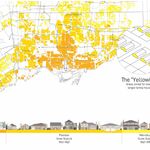reaperexpress
Senior Member
Fantastic news! My biggest pet-peeve streetcar stops are finally getting the axe!The Dundas and Victoria stops are being eliminated as of Monday, November 23.
According to the board report on stop rationalization, that stop "will be surveyed to determine the number of customers using [it] for the specific purpose of accessing the nearby hospital" (page 5).I didn't see any notices at Queen and Victoria, unfortunately.
let's see, more stops need to be eliminated, including for example:
Huron
McCaul
Chestnut
and there should be only 2 stops between Ossington and Bathurst
On 501, Peter, McCaul, York, Victoria (all insanely close), and likely 2 between Bathurst and Ossington (1.2km, currently 4 stops in between, average distance 240m).
According to page 7 in that same report, these are the stops approved for elimination on those two routes (the ones you mentioned are underlined).
505 Dundas:
- College (stop is eastbound only)
- Sheridan (opposed by local councillor)
- Bellwoods (stop is eastbound only)
- Chestnut
- Victoria
I agree that Huron needs to go as well, but removing McCaul would create a 440 m spacing which is a bit much for the first batch of removals.
501 Queen
- Abell/Beaconsfield (opposed by local councillor)
- McCaul and Simcoe* (to be replaced by St. Patrick)
- York
- Victoria*
- Caroline/Brooklyn (opposed by local councillor)
- Connaught and Kent (to be replaced by Woodfield)
- Waverly and Lee (to be replaced by Bellefair)
*Victoria and Simcoe are not in the list, even though they are mentioned elsewhere in the report as being identified for removal, including in the diagram at the end.
Removing Peter would create a 460 metre spacing, which is too long for now. The location of pedestrian crossings between Ossington and Bathurst means that there's no middle ground between the current 250m spacing and a 500m spacing, which is much too long for the first round of removals. Maybe in the future we could relocate some signals and PXOs to be more in the 300-400m range.
Last edited:




